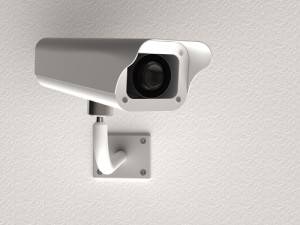Growing video surveillance market: How can mesh help?
Jul 30, 2015
 The video surveillance market is set on a steady incline, according to recent research. Worldwide, the video surveillance systems and services market is expected to grow to $48.32 billion by the end of 2020, expanding at a compound annual rate of 18.1 percent, according to Transparency Market Research. In 2013, the market was worth $14.98 billion. This hefty increase may indicate a more pronounced need for stronger networks that can be deployed quickly and easily.
The video surveillance market is set on a steady incline, according to recent research. Worldwide, the video surveillance systems and services market is expected to grow to $48.32 billion by the end of 2020, expanding at a compound annual rate of 18.1 percent, according to Transparency Market Research. In 2013, the market was worth $14.98 billion. This hefty increase may indicate a more pronounced need for stronger networks that can be deployed quickly and easily.
Where is video surveillance necessary?
The report named residential, transportation, infrastructure, educational, health care and industrial arenas are all places video surveillance systems are used. Nearly every level of society can benefit from a strong surveillance network. Strong networks are especially important in a public safety capacity. Public safety officials utilize video networks to keep an eye in the sky over their cities and make sure their streets remain safe.
How do we strengthen our networks?
As video surveillance technologies are improved over time and the market continues to show startling increases, it will become more important to make sure networks are built to withstand disasters and carry large amounts of data with ease. Traditional networks in a ring topology may not be strong enough to support high loads of surveillance footage and may be weak against attack, according to Networking Basics contributor Ayesha Nizam. If the central node in a traditional system goes offline, the rest of the network shuts down. However, there is a solution to this problem: mesh networking.
Mesh nodes deployed by Firetide improved video surveillance in Phoenix, Arizona, when the city needed to add camera and network infrastructure but were pressured to do it quickly. When officials installed the Firetide mesh nodes, one of the biggest concerns was the amount of high-quality video the network would need to support. City officials shouldn’t have worried – the mesh was strong enough.
“Results have been impressive, especially in the quality of video the Firetide network supports,” said Chris Jensen, a city detective with the Drug Enforcement Bureau.
The other huge benefit from installing mesh nodes instead of a traditional ring network was that the police department had a decreased need for manpower. Taking surveillance officers off the street and utilizing them for other projects within the department could be a potential gold mine in increased productivity for the city.
“[I]t is not only about the bandwidth and image quality,” Jensen said. “We’ve increased coverage and saved on manpower: instead of 30 surveillance officers on the streets, only two are needed in a central monitoring station to cover the same geographical area.”
The takeaway here is that mesh networking can provide the same benefits as a traditional topology, but with an added level of strength and security. City officials in Phoenix realized the potential advantages of deploying this kind of system.
Contact Firetide today to find out how our AutoMesh technology can help make your city safer.

